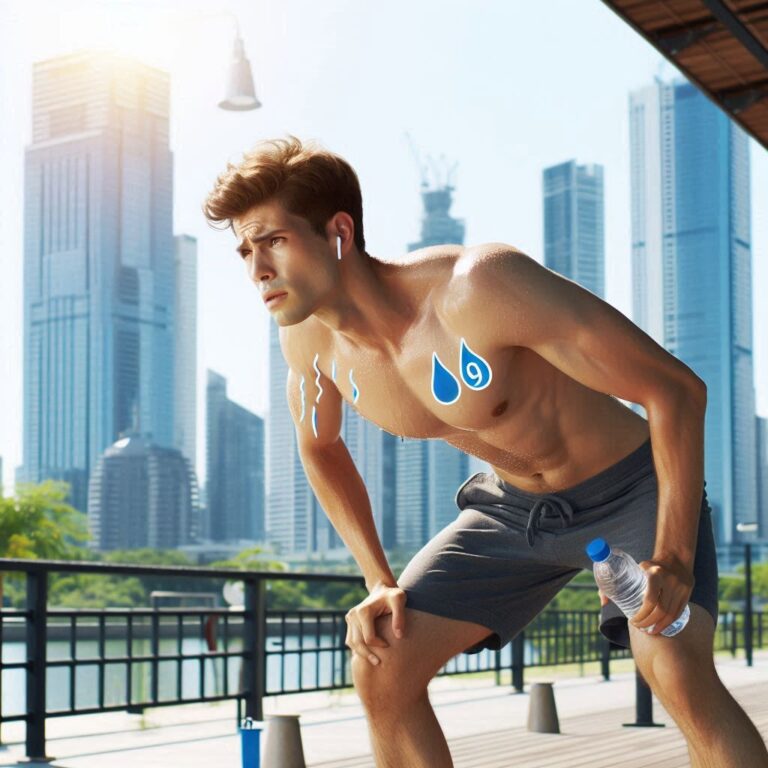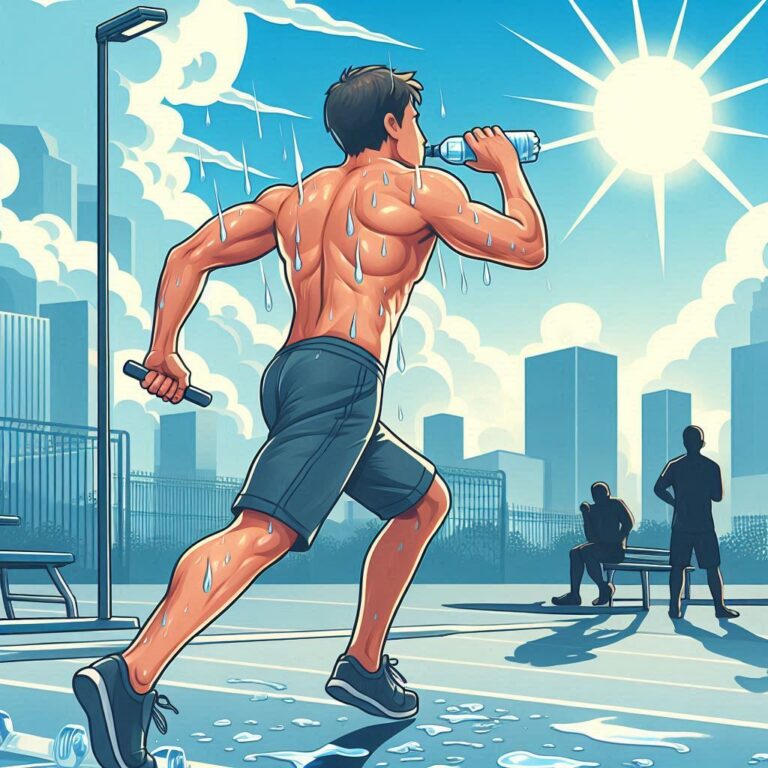How to Exercise Safely in Extreme Heat
15 Science-Backed Tips to Avoid Heatstroke
From Hydration Hacks to UV Defense: Your Survival Guide for Summer Fitness (Without Melting!)
Ever pushed through a midday run only to end up dizzy and dehydrated? You’re not alone. As a personal trainer who once collapsed during a 100°F heatwave, I’ve transformed my near-disasters into proven strategies for thriving in scorching conditions. Through coaching desert marathoners and HIIT enthusiasts, I’ve discovered that summer fitness isn’t about toughness—it’s about smart adaptations.
In this guide, you’ll uncover:
The hydration equation even athletes overlook (spoiler: watermelon counts as workout fuel)
The SPF 30 loophole most gym-goers miss (hint: it’s not about the number)
How to turn grocery shopping into a heat-smart workout
5-minute fixes that prevent 90% of heat-related injuries
Whether you’re a sunrise yogi or a lunch-break lifter, these tactics will help you train smarter, recover faster, and actually enjoy summer workouts. By the end, you’ll have a personalized heat-beating playbook that keeps you safe while chasing your fitness goals—no ice bath required. Ready to sweat smarter? Let’s dive in.
Physical activity or any kind of exercise is ideal and, in some cases, mandatory (if your physical condition allows it). Many of us also measure it for physical and mental fitness. As physical movement or workouts produce heat, warmth, and sweat, there is a connection between weather and physical activity. Lower temperatures will allow more engagement compared to hot weather. However, there is also the benefit of a long, sunny day as we have a longer duration to complete our daily tasks and find free time for personal care and development. There are some basic norms that you need to follow to engage in physical activity in any weather.
Why Hot Weather Demands a New Fitness Playbook
- Time: You need to keep an eye on workout timing. Timing is the key to success.
• Monitoring the weather: You must check the weather conditions before any activity. Hot weather and exercise increase body temperature. For example, when you run on a hot day, your body temperature rises. Though your body cools itself by sweating, hot, humid weather makes this process less effective. I recommend checking the weather report before working out, as a normal workout on a regular day can become dangerous in hot, humid weather. We need to be mindful of our bodies. People with larger body sizes, the elderly, and kids must be cautious before doing rigorous exercise on a hot day.
• Take ample time to adjust to the heat: Sometimes, you need time to adjust to a new environmental situation. Take adequate time to get comfortable on a hot, humid day so that your body is prepared for a workout.
• Hottest part of the day: Avoid working out during the hottest time of the day. Early morning is usually the best time, as the temperature is relatively low. Note that from 10 AM – 4 PM, the heat is at its peak. During this time, stay in the shade, join an aerobics class, or use a pocket fan or cooling spray to cool yourself.
• Dress sense wins the game: Your outfit is vital when working out in hot weather. Light-weight, light-colored, loose-fitting clothes, and moisture-wicking fabrics can help. Dark colors absorb heat, so avoid them.
Also, use UV-blocking sunscreen. Select water-resistant sunscreen (SPF 30 or higher) because you will sweat during a workout. Apply it 30 minutes before going out and reapply every 2 hours or as directed. To avoid direct sun exposure, wear a hat during your workout.

he Hydration Equation: Beyond Chugging Water
- Food before workout: Avoid eating right before a workout. Eat at least an hour in advance and keep it light. Food generates heat as our bodies metabolize it for energy, so avoid excess heat when it’s unnecessary.
• Hydrate: Staying hydrated refuels energy and boosts the body. Drink plenty of water and include water-rich foods like watermelon, grapefruit, and lettuce. You lose several pounds of water during workouts, so replace it by drinking fluids. For workouts over 60 minutes, consider sports drinks for extra hydration.
• Listen to your body: Your body will signal its needs during a physical activity in hot weather. Pay attention to this, and don’t push yourself to the limit—you\’re on the same team. Take logical breaks based on your workout type and duration.
• Don’t drink too much: Over-drinking can lead to over-hydration, which isn’t ideal. It can cause hyponatremia (low blood sodium).
• Tie up with a partner: Exercising alone on hot, humid days can be tough and pose safety concerns. A workout buddy makes the experience enjoyable and adds a layer of security.
• Heat-friendly plans: If it’s hot outside, think of ways to stay active without exposure to high temperatures. These tips will help you stay active indoors and beat the heat.
Indoor Summer Fitness Ideas That Don’t Suck
Sometimes, alternatives to outdoor workouts are best. Below are some indoor ideas to keep you active.
- Indoor activities: Swimming or working out at the gym are great indoor options.
- Wash your car: Actively engage in physical work by washing your car in the garage.
- Gardening: Gardening is a peaceful, mindful physical activity that brings pleasure.
- Yoga: Practicing yoga is a great alternative to other exercises.
- Yard work: Yard work is fun and keeps your outdoor space clean.
- Walking: Take a walk to the mall or a nearby place with a friend.
- Home weightlifting: Use household items as weights or stretch bands to stay active.
- Online videos or classes: Many online classes and apps offer indoor activity ideas.
- Household activities: Cleaning, laundry, or washing windows can keep you active indoors.
- Sports and dancing: Play indoor sports like volleyball or basketball, or dance for physical activity.
- Create your own plan: Choose your own enjoyable indoor activities that involve physical effort.
• Shady routes for outdoor plans: If you need to go out, look for shaded routes to avoid direct sun exposure.

Heat Stroke Prevention: 5 Life-Saving Warning Signs
- Consult your doctor: Follow your doctor’s advice regarding physical activity to avoid unexpected experiences.
• Know the warning signs: Listen to your body’s signs. If you feel something unexpected, take it as a warning.
Key symptoms to watch for:
- Heavy sweating
• Weakness
• Dizziness
• Fainting
• Vomiting
• Fatigue
• Shortness of breath
• Headache
• Muscle cramps
• Dark urine
• Rapid heartbeat
• Unconsciousness
If these symptoms are mild, stop immediately. They may be signs of heat stroke, where the body loses control over temperature regulation. This serious condition requires immediate medical attention.
Seek help if you experience:
- High body temperature
• Absence of sweating, dry or red skin
• Strange behavior
• Hallucinations
• Confusion
• Seizures
• Coma
Awareness is crucial to staying safe and physically healthy. To enjoy your workouts to the fullest, stay mindful of these issues.

